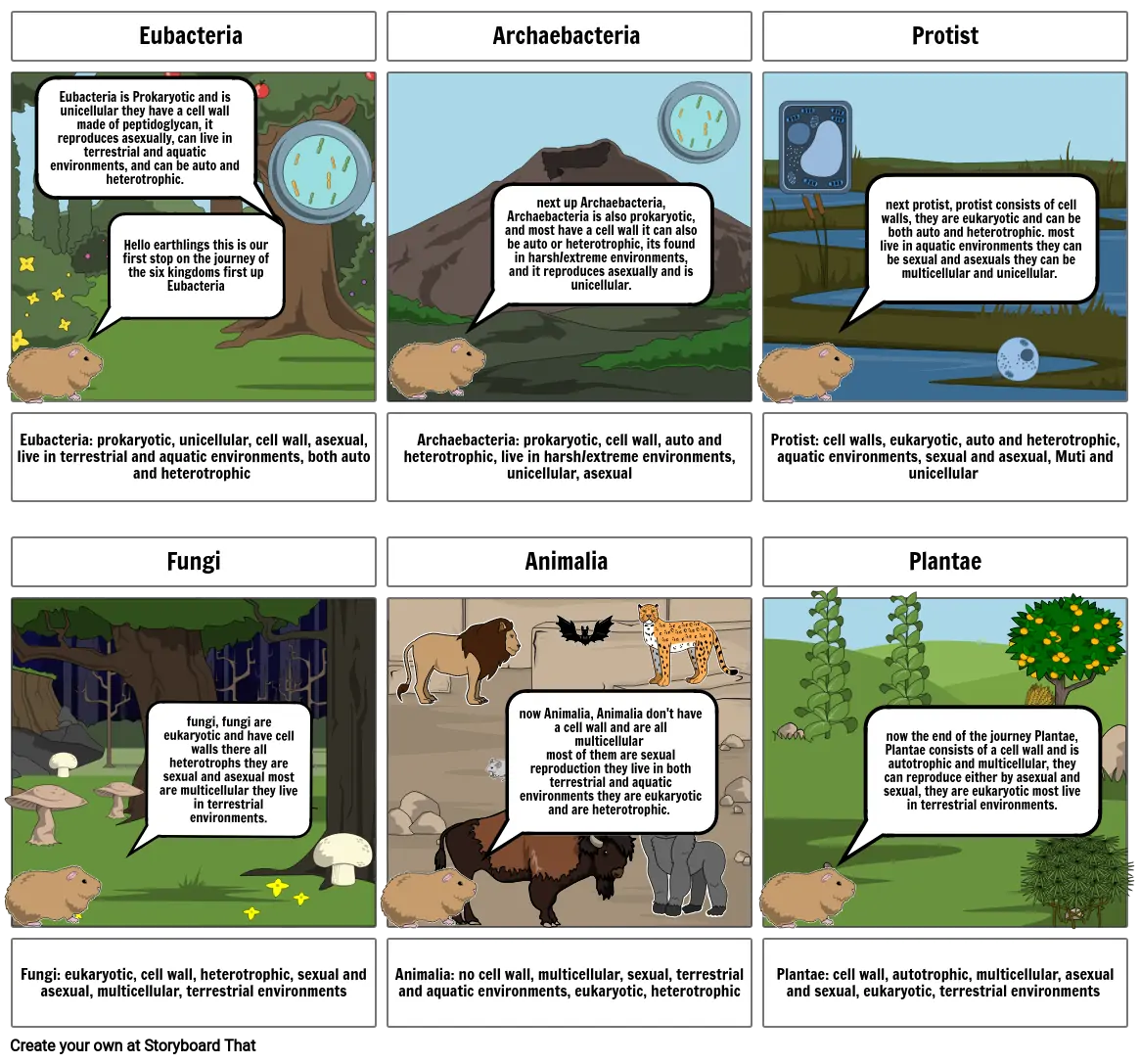the six kingdoms

Texto del Guión Gráfico
- Eubacteria
- Eubacteria is Prokaryotic and is unicellular they have a cell wall made of peptidoglycan, it reproduces asexually, can live in terrestrial and aquatic environments, and can be auto and heterotrophic.
- Hello earthlings this is our first stop on the journey of the six kingdoms first up Eubacteria
- Archaebacteria
- next up Archaebacteria, Archaebacteria is also prokaryotic, and most have a cell wall it can also be auto or heterotrophic, its found in harsh/extreme environments, and it reproduces asexually and is unicellular.
- Protist
- next protist, protist consists of cell walls, they are eukaryotic and can be both auto and heterotrophic. most live in aquatic environments they can be sexual and asexuals they can be multicellular and unicellular.
- Eubacteria: prokaryotic, unicellular, cell wall, asexual, live in terrestrial and aquatic environments, both auto and heterotrophic
- Fungi
- Archaebacteria: prokaryotic, cell wall, auto and heterotrophic, live in harsh/extreme environments, unicellular, asexual
- Animalia
- Protist: cell walls, eukaryotic, auto and heterotrophic, aquatic environments, sexual and asexual, Muti and unicellular
- Plantae
- Fungi: eukaryotic, cell wall, heterotrophic, sexual and asexual, multicellular, terrestrial environments
- fungi, fungi are eukaryotic and have cell walls there all heterotrophs they are sexual and asexual most are multicellular they live in terrestrial environments.
- Animalia: no cell wall, multicellular, sexual, terrestrial and aquatic environments, eukaryotic, heterotrophic
- now Animalia, Animalia don't have a cell wall and are all multicellular most of them are sexual reproduction they live in both terrestrial and aquatic environments they are eukaryotic and are heterotrophic.
- Plantae: cell wall, autotrophic, multicellular, asexual and sexual, eukaryotic, terrestrial environments
- now the end of the journey Plantae, Plantae consists of a cell wall and is autotrophic and multicellular, they can reproduce either by asexual and sexual, they are eukaryotic most live in terrestrial environments.
Más de 30 millones de guiones gráficos creados

